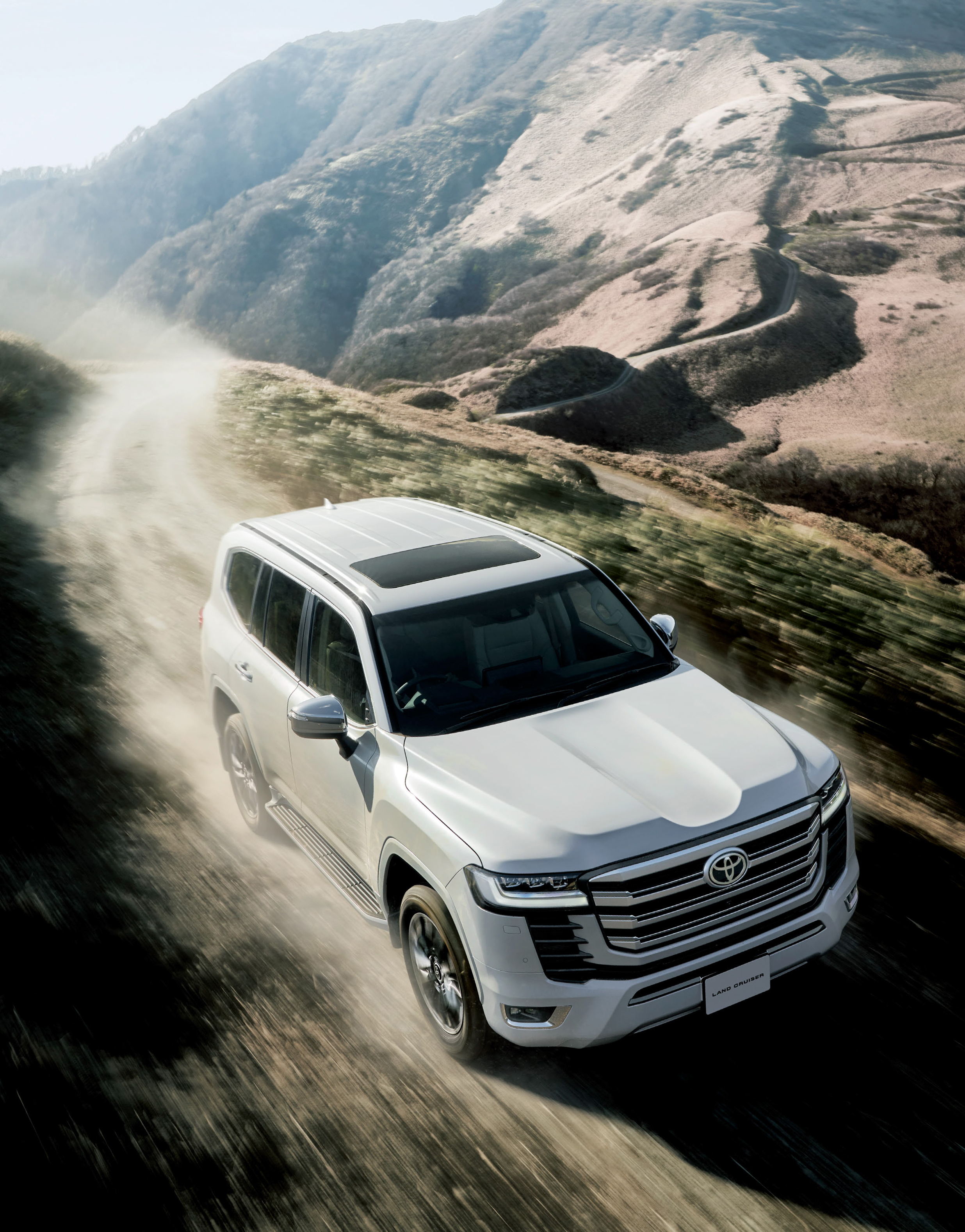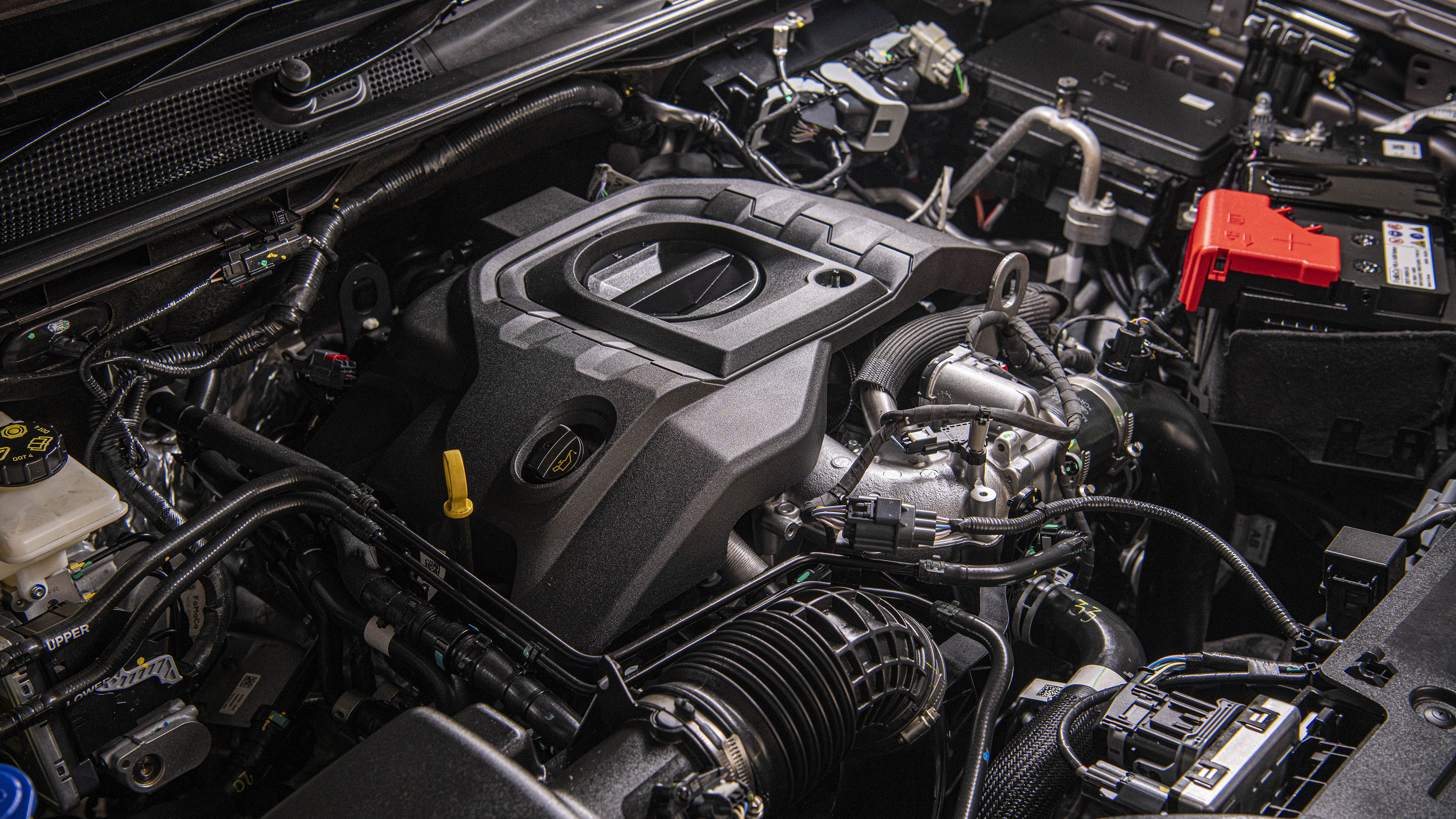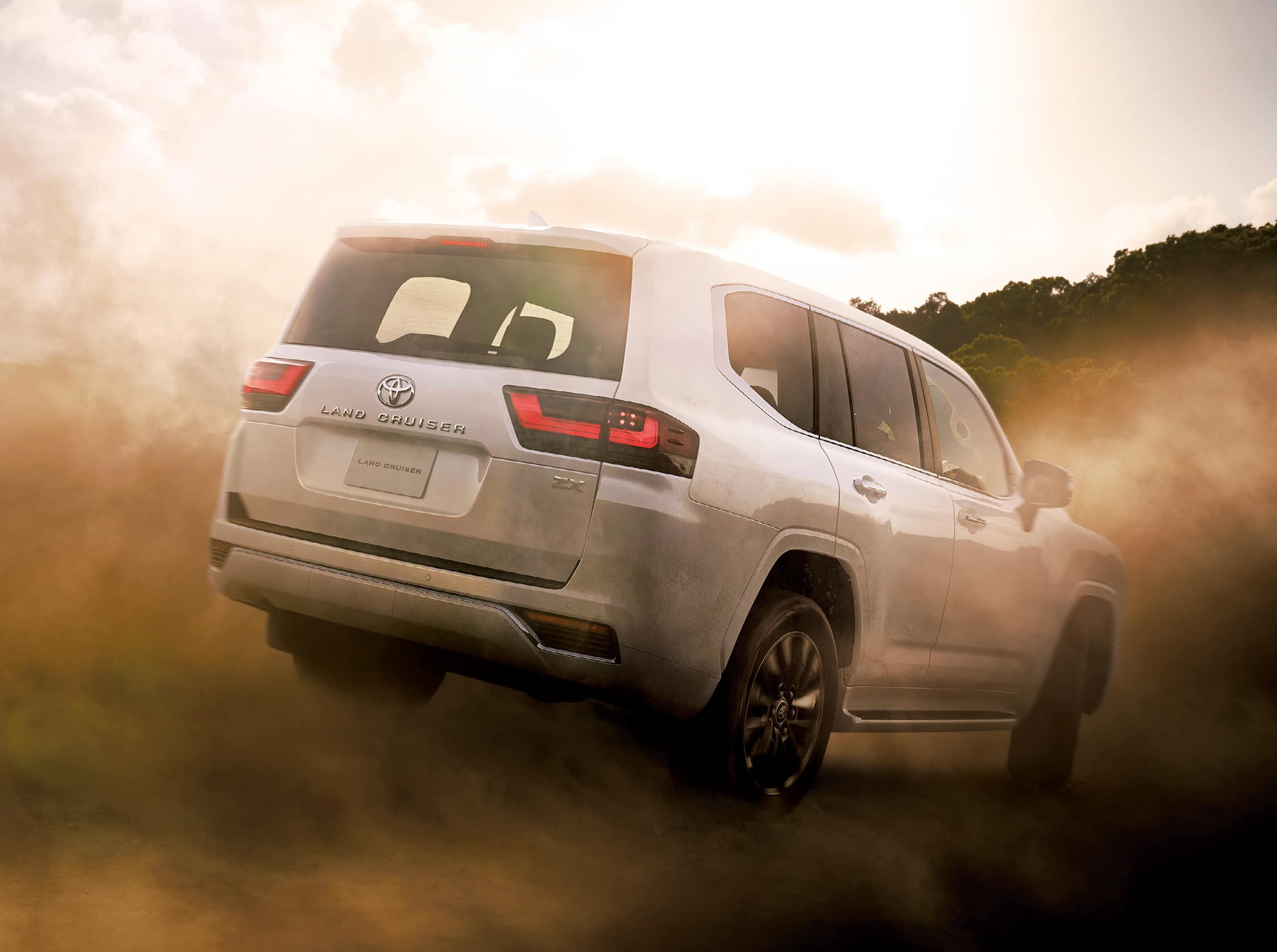Advertisement
Advertisement
The difference between Toyota’s flagship Landcruiser Sahara and the chasing pack has historically been more than just the badge and numbers on the price tag. Now, however, there’s a new kid in big 4X4 wagon town. Gone are the days of this category being a straight-up boxing match between the ‘Cruiser and Patrol; the new Everest has thrown its hat in the ring.
Alright, maybe there’s more to it than just the badge and the price tag, but is a 300 series Sahara worth $60,000 more than a Next Gen Everest Platinum? Absolutely not. Don’t get it twisted, the 300 is a great car, but you’ll never convince us it’s worth the asking price. Over the last couple of years we’ve seen insane COVID price inflation, and Toyota seem to be caught up in the hype.
Ford, however, have managed to release an all-new model of Everest with comparable specs and tech to a 300. They’ve done it alongside the release of a new Ranger, and Ranger Raptor, and against all odds, they’ve kept their pricing well south of $100k.
According to Carsales, you can get your backside into a V6 diesel Everest Platinum for around $85k drive away. This is a vehicle designed and built to be the best vehicle it can possibly be, and it shows. It’s powerful, comfortable, functional and stylish. The 300 by comparison is a vehicle built to improve slightly on the 200, as is Toyota’s way. They’re never keen to push the boundaries, they’ll just give you slight improvement model on model.
Long regarded the king off the road in Australia, Toyota really nailed their market with the 200. Despite a frosty reception following the death of the 1HD-FTE, the 1VD-FTV eventually trampled its way to the top of the tree in terms of ‘Cruiser engines. It offered great power and torque, and with a little aftermarket tickling, a juicy exhaust note to boot.

Grey nomads and soccer mums alike flocked to the 200 like seagulls to chips. It ticked all the boxes without really offering anything that the 100 series didn’t. Toyota seem to have found a way to sell people tech that’s ten years behind the market, and spin it as a positive. ‘Reliability’, the fans shout. ‘Resale’. ‘Toyota tough’ they say. Loyal Toyota fans won’t hear a bad word about their beloved manufacturer, or the vehicles they build.
We call bullsh.. ah, um, we disagree. Resale, yes. For reasons beyond our comprehension, second hand Landcruisers seem to be more valuable than oxygen to scuba divers. But reliability? Really? Yes they have been reliable steeds in models past, but since emission controls have tightened and the 1HD-FTE was murdered in cold blood, Toyota have failed to produce a reliable diesel no matter what they tried. If it wasn’t for the aftermarket in Australia, Toyota diesels since the mid-2000s would be nothing more than boat anchors.
That being said, thanks to that Aussie aftermarket scene, you can turn a 200 into a phenomenal vehicle. Easily capable of upwards of 900Nm of torque, abundantly spacious and comfortable, and capable of hauling huge caravans. What more could you want out of a large 4×4 wagon? Will the 300 prove as big a success? How will the market respond to the new V6?
In the outgoing Everest, Ford had a good crack at a ute-based SUV. It was a solid 4×4 all round, and made for a great family car. The 2.0L Bi-turbo motor was well matched to the size of the vehicle, despite the typical prehistoric shouts from the great unwashed that more cubic inches were needed. In the US, Ford have been under fire from their gun-toting, freedom-fighting full-size truck driving clientele about the Ecoboost engine range. For many, engine capacity counts for more than power and torque figures.

They’ve taken the feedback onboard and treated us to a magnificent 3.0L turbo diesel V6 outputting 184kW and 600Nm. To put that into perspective, at the height of their popularity HSV sold the VS Clubsport with 185kW and 400Nm. In the mid to late 90s, this was basically Australia’s favourite sports car. Now we’re talking about a diesel family 4X4 with the same power and 50% more torque.
But it isn’t just the engine that’s increased in size. The overall external dimensions of the Next Gen Everest are comparable to the 300. A wheelbase of 2900mm compared to the 300 at 2850mm probably comes as a huge surprise. The Everest is 4940mm long and 1923mm wide to the ‘Cruiser at 4980mm and 1980mm. The differences are marginal.
Where Ford have really excelled is inside. And to be fair, Toyota have also come up trumps in their interior. Both cockpits are nice places to spend long days. Where Toyota have leaned right into the cockpit idea, Ford have gone the other way. The 300 feels as though it’s moulded around the occupants, similar to what Nissan did with the 300ZX in the 90s. Ford have created a much bigger interior, with more open space, and they’ve used a few tricks to execute their ideas.
The internal door handles have been incorporated into the armrests to allow them to fit narrower door trims and open the interior width. The centre console stack is near-vertical. Plenty of physical buttons and dials have been computerised and moved into the huge infotainment screen to free up real estate. The one real difference inside is thanks to the additional height available in the 300. It stands at 1950mm tall compared to the Everest’s 1841mm. For that extra height you get a slightly higher driving position, which gives these two 4x4s an entirely different feel on and off road. A subtle but substantial difference.
Worry not, sweet child, for both these steeds will haul your carriage comfortably. We already know what Landcruisers are about; they’re absolutely built for this. But when we dive into the numbers, like the well-informed consumers we are, we find the Everest stacks up to the 300 pretty well.
| Landcruiser 300 Sahara | Next Gen Everest Platinum | |
| Kerb weight | 2630kg | 2492kg |
| GVM | 3280kg | 3150kg |
| GCM | 6750kg | 6250kg |
| Payload | 650kg | 658kg |
| Power | 227kW | 184kW |
| Power to weight | 86kW/tonne | 74kw/tonne |
| Torque | 700Nm | 600Nm |
| Torque to weight | 266Nm/tonne | 241Nm/tonne |
What you will notice, however, is at GVM the Everest cannot tow 3.5t. This is a common thing across the dual cab ute market, and understandable considering the Everest’s Ranger roots. To be truly considered a 300 competitor, this will need to be rectified. That being said, 3.1t is still a heavy van.

Where the Everest shines is where the 300 leaves you wanting more; tech. You get actual real-world useful features like factory fitted electric brakes. Blind-spot monitoring that can be set to take into account the length of your trailer. A function that’ll run a light sequence through the trailer so you can check your lights. Reverse gear anti-collision technology, so you don’t back into your trailer.
While you don’t get that in the 300, you do get 110L of fuel capacity. While that’s down on the 200’s 138L, it’s superior to the Everest’s 80L. Both vehicles return a similar claimed fuel consumption figure, however we’ve found it impossible to achieve anything near the claimed 8.9L/100km of the 300. Over around 300km of mixed condition driving we saw 9L/100km in the Everest (Ford claim 8.5L/100km for the Everest Platinum).
Of course, where the manufacturers fall short the aftermarket will thrive. Toyota have always been extremely well supported by the Aussie aftermarket, and Ford developed the new Everest in conjunction with ARB. Both 4X4s will have almost endless options to customise to suit your purpose.
There’ll be GVM upgrades undoubtedly, but only time will tell if the GCM of each are able to be increased. Long range fuel tanks already exist, and suspension upgrades are basically available before the models are officially released. There’ll be a litany of bolt-on accessories too, but they’ll all cost you weight. This will be a telling factor in how the Everest performs against the 300, and the 300 to the rest of the market. When you add your tow capacity to your GVM and it doesn’t equal your GCM, any additional weight will be your nemesis.

Interestingly, the Everest Platinum is equipped with 21in wheels as standard, and Ford give you the option of highway or all-terrain tyres. The 300 Sahara comes with 18in wheels, which are far more offroad-friendly.
What’s also worth noting is the fact that the Sahara is no longer the cream of the crop in Landcruiser world. There’s now a Sahara ZX and a GR Sport model above it. The Platinum is the top-of-the-line Everest with the Sport nestling just underneath it.
Based on dealership drive away prices for a private buyer in the city of Sydney, here’s how they stack up:
| Toyota Landcruiser 300 Sahara | $139,832 |
| Toyota Landcruiser 300 Sahara ZX | $147,812 |
| Toyota Landcruiser 300 GR Sport | $146,762 |
| Ford Everest Sport | $74,935 |
| Ford Everest Platinum | $83,789 |
As you can see, the fiscal difference is staggering. What’s even more incredible is the fact you can get yourself into a base-model 300, running the same driveline as the rest of the range, for $97,080. How Toyota can justify the price difference from GX to GR Sport is beyond us. What also defies belief is that Ford can build an Everest so similar and sell it to you for up to $71,827 less, although that’s without ticking any option boxes.
The Everest genuinely competes with the 300 series across the board. Never before has the bridge been so far in terms of price, but so close in specifications and features. Ultimately, we don’t expect 300 sales to suffer because of the Everest. That’s not down to the quality of either vehicle, that’s purely blind brand loyalty. If there’s one thing we hate in the 4X4 industry, is closed-minded loyalists. Open your mind and go test drive some alternatives, you will be in for a surprise.